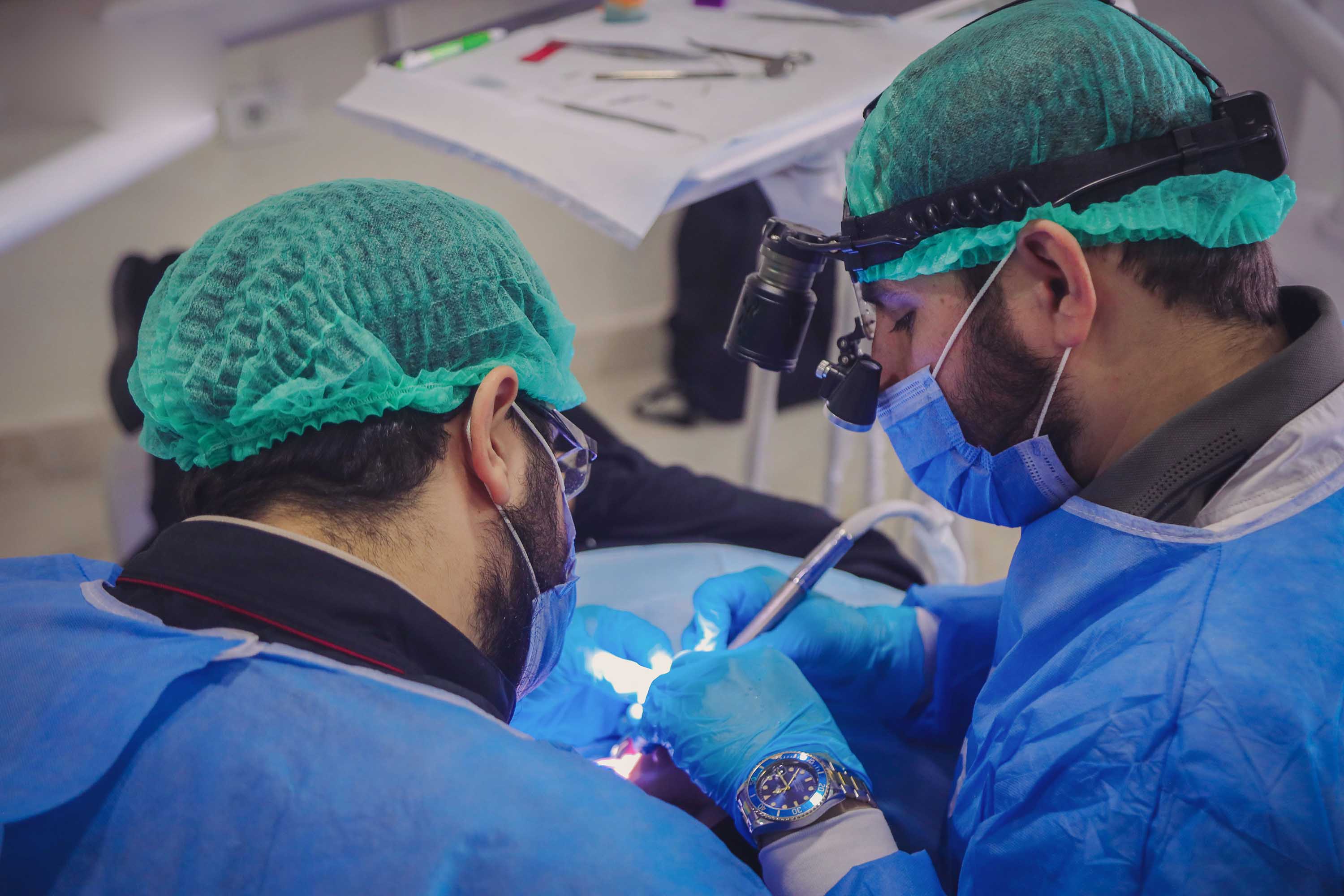أخبار الجامعة
كن على علم بكل جديد
حفل التخرج للعام الدراسي 2025/2024
كليات الجامعة
كلية الهندسة
- فرع القامشلي
- فرع حلب
كلية العلوم الإدارية والمالية
- فرع القامشلي
- فرع حلب
كلية اللغات الحية والعلوم الإنسانية
- فرع حلب
كلية طب الأسنان
- فرع حلب
كلية الهندسة المعمارية
- فرع حلب
الوظائف الشاغرة
كن أحد نجومنا الساطعة
الأبحاث
كلية طب الأسنان
رفاه قاسم
Assessing Oral Health Attitudes among Preclinical and Clinical Dental Students: A Cross-sectional Study at Cordoba Private University, Syria
Abstract Aim: This cross-sectional study aimed to assess and compare the oral health attitudes of preclinical and clinical dental students at Cordoba Private University in Syria using the Hiroshima University–Dental Behavior Inventory (HU–DBI) questionnaire, while also examining differences by gender and specific questionnaire items to identify behavioral patterns that could guide future educational improvements. Materials and methods: A total of 331 students participated, with the first 3 academic years classified as preclinical (187 students) and the final 2 years as clinical (144 students). The 20-item HU–DBI questionnaire in a paper-based format (hard copy) assessed oral health attitudes and behaviors with agree/disagree responses. Scores range from 0 to 19, with higher scores reflecting better oral health behavior. One point was awarded based on specific agree/disagree responses. Data were analyzed using the Kolmogorov–Smirnov test, Chi-square test, and Mann–Whitney U test. A p-value of < 0.05 was considered statistically significant. Results: No significant difference in mean score between the two groups was analyzed; however, clinical (advanced years) students exhibit significantly better behaviors in certain key areas, such as frequent brushing (p = 0.001), brushing professionally (p = 0.001), and eating less sweets (p = 0.003), compared to preclinical students, indicating positive effects of dental education in those domains. Conclusion: Clinical students exhibit significantly better behaviors in certain key areas, such as frequent brushing, brushing professionally, and eating fewer sweets, compared to preclinical students. However, many other aspects of oral health attitude did not differ notably between junior and senior students, and worrisome habits like increased heavy smoking in the clinical years were identified. Clinical significance: Understanding the evolution of dental students’ oral health attitudes is essential, as they serve as future role models. While education improves certain behaviors, the persistence of negative habits like smoking highlights the need for targeted interventions in the curriculum.
The Journal of Contemporary Dental Practice - 25-10-Oct
تحميل
محمود طعمة
Assessing Oral Health Attitudes among Preclinical and Clinical Dental Students: A Cross-sectional Study at Cordoba Private University, Syria
Abstract Aim: This cross-sectional study aimed to assess and compare the oral health attitudes of preclinical and clinical dental students at Cordoba Private University in Syria using the Hiroshima University–Dental Behavior Inventory (HU–DBI) questionnaire, while also examining differences by gender and specific questionnaire items to identify behavioral patterns that could guide future educational improvements. Materials and methods: A total of 331 students participated, with the first 3 academic years classified as preclinical (187 students) and the final 2 years as clinical (144 students). The 20-item HU–DBI questionnaire in a paper-based format (hard copy) assessed oral health attitudes and behaviors with agree/disagree responses. Scores range from 0 to 19, with higher scores reflecting better oral health behavior. One point was awarded based on specific agree/disagree responses. Data were analyzed using the Kolmogorov–Smirnov test, Chi-square test, and Mann–Whitney U test. A p-value of < 0.05 was considered statistically significant. Results: No significant difference in mean score between the two groups was analyzed; however, clinical (advanced years) students exhibit significantly better behaviors in certain key areas, such as frequent brushing (p = 0.001), brushing professionally (p = 0.001), and eating less sweets (p = 0.003), compared to preclinical students, indicating positive effects of dental education in those domains. Conclusion: Clinical students exhibit significantly better behaviors in certain key areas, such as frequent brushing, brushing professionally, and eating fewer sweets, compared to preclinical students. However, many other aspects of oral health attitude did not differ notably between junior and senior students, and worrisome habits like increased heavy smoking in the clinical years were identified. Clinical significance: Understanding the evolution of dental students’ oral health attitudes is essential, as they serve as future role models. While education improves certain behaviors, the persistence of negative habits like smoking highlights the need for targeted interventions in the curriculum.
The Journal of Contemporary Dental Practice - 25-10-Oct
تحميل

































